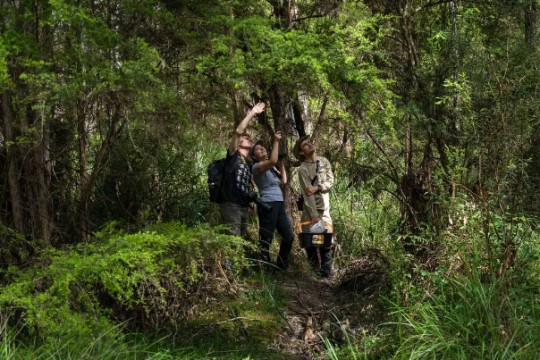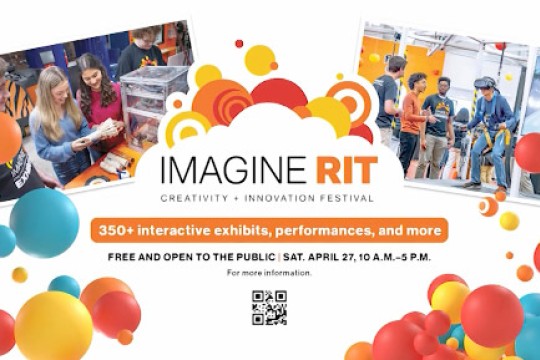Sloan Grant Fuels RIT’s Bioinformatics Program
defects, design pharmaceuticals and visualize cells and organs
It’s one thing to decode the human genome; it’s another thing altogether to figure out what it means. Enter bioinformatics, the hot, new field for computer experts with a twist.
The highly publicized human genome project—which generated reams of data incomprehensible to humans—shone a spotlight on the demand for bioinformatics professionals. Now it’s up to computer whizzes with a firm grasp of the biological sciences to analyze and interpret the jumbled genomic data.
Rochester Institute of Technology recently received a $150,000 grant from the Alfred P. Sloan Foundation to develop a master’s degree program in computational biology/ bioinformatics, of which only a handful exists in the country. This grant will help RIT develop a new kind of master of science degree—a two-year professional degree along the lines of an M.B.A. or law degree.
The new bioinformatics program, along with the existing undergraduate degree in biotechnology, reflects RIT’s commitment to preparing professionals for emerging technical fields. Launched in 1983, RIT’s biotechnology program is one of the oldest and most respected in the country. The university recently conducted a study assessing the workforce needs of the biotech industry in Western New York and found that future growth would rely upon a highly skilled and educated workforce. The study was funded with the help of Sen. James Alesi through New York state Empire State Development and conducted by Douglas Merrill, head of RIT’s biological sciences, and Gary Skuse, director of bioinformatics.
"Bioinformatics uses computer technologies to address and answer biological questions," Skuse explains. "We’ve talked to many people in the bioinformatics/biotech industry and it’s clear that there’s a great need for skilled bioinformaticists today and in the future."
The demand for bioinformatics specialists has snowballed in recent years. Trained professionals are in demand for a variety of biotech applications, such as identifying genes and defects in genes; identifying protein structures to design pharmaceuticals; and "visualizing" or looking at biological structures (cells, tissues, organs), using computers to manipulate them.
"Bioinformatics is the way of the future," Merrill notes. "It’s how scientists are going to be making the big discoveries that will have a profound effect on human health in the years to come."
RIT will launch its professional master’s program in bioinformatics in spring 2002, preceding a new bachelor’s degree that will accept students later that year. Graduate students will choose from two tracks: one for biological scientists who need computer-programming skills; the other for computer scientists who lack a biology background.
The program will integrate biology and computer science, with courses designed and team-taught by biologists, information technologists, computer scientists and mathematicians. Input will be sought from an eight-member external advisory board, which currently includes industry representatives from IBM and Wyeth Lederle Vaccines.
"Our overall goal is to provide the best education we can and we can’t do that in a vacuum," Skuse says. "We will do it hand-in-hand with people from industry."
NOTE: RIT’s department of biological sciences has an enrollment of approximately 140 biology majors and 200 biotech majors. The new bioinformatics program is expected to attract considerable interest from incoming freshman, transfer students and graduates.














